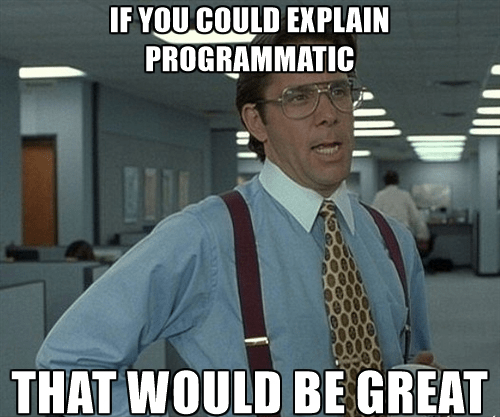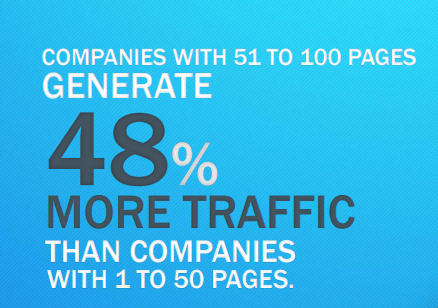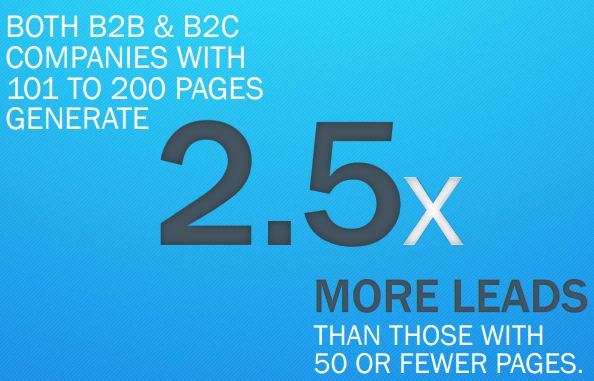
Sie kennen vielleicht die Suchmaschinenoptimierung (SEO), aber haben Sie schon von Programmatic SEO gehört? Das ist ein Kopfsprung in die Untiefen des Internets.
In einer kürzlichen Online-Diskussion zwischen den Teams von the.com und NUOPTIMA haben wir eine 15-jährige SEO-Reise Revue passieren lassen und die gepflasterten Wege aufgezeigt, die Sie in die nahe Zukunft führen.
- Jeff McKinnon, Co-CEO und Mitbegründer von the.com
- Aman Ghataura, Leiter der Wachstumsabteilung von NUOPTIMA
- Viktor Bartak, Leiter der Abteilung SEO bei NUOPTIMA
Moment - was ist Programmatic SEO?

Programmatische Suchmaschinenoptimierung (SEO) ist eine SEO-Strategie, die dem zunehmenden Suchverkehr entgegenwirkt, indem Landing Pages in großem Umfang erstellt werden. Yelp und Tripadvisor sind zum Beispiel zwei Unternehmen, die programmatische SEO nutzen, um Tausende von Seiten zu erstellen, mit denen sie ihre Zielgruppe erreichen. Wenn Sie eine Unternehmenssuche eingeben, steht Yelp fast immer ganz oben auf der ersten Seite der Suchergebnisse.
Unternehmen entscheiden sich für programmatische SEO, weil sie wissen, dass eine große Anzahl von Menschen nach diesen Suchbegriffen sucht und sie so viele Menschen wie möglich erreichen wollen. Also erstellen sie Tausende von Landing Pages durch programmatische SEO, um sicherzustellen, dass ihre Links die meisten Klicks erhalten. Bei dieser Methode geht es nicht so sehr um qualitativ hochwertige oder maßgebliche Inhalte, sondern vielmehr um ein starkes Nutzererlebnis und Tausende von Zielseiten mit Transaktionsabsicht.
Die Wellen der programmatischen SEO

Als Erstes müssen Sie verstehen, dass programmatische SEO keine neue Methode ist. Im Gegenteil, sie ist seit fast zwei Jahrzehnten eine praktikable SEO-Methode. Allerdings hat ihre Popularität im Laufe der Jahre aufgrund der ständigen Aktualisierungen und neuen Technologien von Google abgenommen und abgenommen. Die neueste Technologie von Google hat dazu geführt, dass programmatische SEO wieder en vogue geworden ist.
Der Leiter der SEO-Abteilung von NUOPTIMA ist Viktor Bartak, der über 15 Jahre Erfahrung im Bereich SEO unter seinem Gürtel. Als jemand, der eine so lange und ausgezeichnete Erfahrung mit SEO seit den Anfängen hat, teilte Viktor Bartak seine Gedanken über programmatische SEO, wie sich diese Methode im Laufe der Jahre entwickelt hat und ihren aktuellen Beliebtheitsstatus.
Bartak beschrieb die Popularität von programmatischem SEO als ein Kommen und Gehen in "Wellen". Er gab eine Übersicht über die Schwankungen im Laufe der Jahre:
- Von 2006 bis 2009 war programmatisches SEO riesig. Es war ungefähr 70% von SEO. Damals gab es "super einfache Algorithmen auf Python, um Milliarden von Seiten zu erstellen". Zu dieser Zeit erkannten die Menschen, dass man mit dem Verkehr im Internet Geld verdienen kann, und sie interessierten sich sehr für die Erstellung von Inhalten und die automatische Erstellung von Websites. Zu dieser Zeit gab es viele Programme, die automatisch Websites erstellten.
- Doch um 2010-2012 wurde Google intelligenter, und minderwertige Inhalte verschwanden. Programmatische SEO ging hier zurück, und stattdessen wurden weiße SEO-Techniken beliebter.
- Danach kam die Ära der Kryptowährungen, die zur Entwicklung der programmatischen SEO beitrug.
- Nun gibt es derzeit eine Verjüngung der programmatischen SEO mit nützlichen, hochwertigen Inhalten. Er schätzt, dass programmatische SEO für etwa 5%-10% der durchgeführten SEO verantwortlich ist, was tatsächlich eine beträchtliche Menge ist, wenn man das Internet als Ganzes betrachtet.
Wie groß ist der Programmatic SEO-Bereich?
McKinnon teilt eine ähnliche Ansicht wie Bartak über die Wellen der programmatischen SEO und stimmt zu, dass es in letzter Zeit ein Wiederaufleben dieser SEO-Methode gegeben hat.
In dieser Diskussion stellte McKinnon fest, dass er persönlich Zeuge einer Wiederaufleben von programmatischem SEO da immer mehr Menschen nach Lösungen suchen, um Datenschutzprobleme und Blockaden zu umgehen, wie z. B. bei Facebook Ads und iOS 14.5. Sogar in Bezug auf die Analytik wird Universal Analytics (UA) durch Google Analytics 4 (GA4) ersetzt und "führt viele der Möglichkeiten ein, wie man bezahlten Traffic durch E-Commerce und Headless E-Commerce tatsächlich verfolgen kann". Er behauptete, dass Unternehmen auf programmatische SEO umsteigen, weil sie weniger Geld für das.com-Tool für programmatische SEO (und die Forschung) ausgeben, als sie jeden Monat für Facebook-Anzeigen ausgeben würden, die man nicht mehr verfolgen kann.
Ghataura bezeichnete auch iOS 14.5 und andere Blockaden als klare Schmerzpunkt. Er sagte, dass die CACs (Kundenakquisitionskosten) bei Google gestiegen sind, weil alle von Facebook zu Google gewechselt sind, und dass die Leute jetzt überlegen, in SEO-Dienste zu investieren. McKinnon verriet, dass 90% der Leute, die die Dienste von the.com nutzen, noch nie programmatische SEO betrieben haben, während die anderen 10% waren aber bei Webflow gab es Einschränkungen (nach 10.000 Datensätzen ist das Limit erreicht).
Neue Forschung zeigt: Mehr ist mehr ist mehr!

Ein besonders interessanter Teil der Diskussion war die Erwähnung einer Forschungsarbeit von HubSpot aus dem Jahr 2022[1] McKinnon hat die Marketing-Benchmarks von über 7.000 Unternehmen analysiert. Ziel des Berichts war es, herauszufinden, wie sich Leads und Besucherzahlen durch die Verbesserung einer Reihe von Marketingmaßnahmen steigern lassen. Die Studie kam unter anderem zu dem aufschlussreichen Ergebnis, dass je mehr Webseiten Sie haben, desto mehr eingehenden Verkehr können Sie erwarten. Die Studie ergab, dass Unternehmen mit 51-100 Seiten 48% mehr Traffic generieren als Unternehmen mit 1-50 Seiten. Außerdem wurde festgestellt, dass B2B- und B2C-Unternehmen mit 101 bis 200 Seiten 2,5 Mal mehr Leads generieren als Unternehmen mit 50 Seiten oder weniger. Was bedeutet das? Wie McKinnon erklärt, "mehr ist mehr". "Mehr Seiten bedeuten mehr Besucher, was wiederum mehr Leads bedeutet:

Daher hat programmatisches SEO zweifellos seinen Platz in modernen, effektiven SEO-Techniken. Programmatic SEO generiert Landing Pages in großem Umfang, und wie die Daten von HubSpot zeigen, ist die Erfolgsquote Ihres Unternehmens umso höher, je mehr Seiten Sie haben (auch wenn die Seiten nicht von höchster Qualität sind).
The.com hat kürzlich ein neues Produkt namens "Automate" auf den Markt gebracht. Dieses Produkt ermöglicht es Unternehmen, Tausende von Websites oder Seiten ohne den Einsatz eines Ingenieurteams bereitzustellen, mit dem Versprechen, bis zu 9,5-fachen Traffic zu verdienen. McKinnon erläuterte, was the.com anbietet und was das neue Produkt ist:
"The.com ist eine Webentwicklungsplattform. Die Leute bauen also Marketing-Sites, Landing Pages" und so weiter. Aber das brandneue Automate "ermöglicht es Ihnen, die von Ihnen erstellten Websites effektiv zu nutzen und Variablen zu erstellen, um Hunderte von Websites oder Tausende von Seiten zu erstellen". McKinnon erklärte, dass die gesamte Plattform nicht "drag and drop" ist, sondern auf einer Tabellenkalkulation basiert. Automate hebt sich von Konkurrenten wie WordPress und Webflow ab, weil man alle Arten von Variablen einstellen kann und nicht denselben Einschränkungen unterliegt. Aus SEO-Sicht bietet Automate die Möglichkeit, automatische Seiten auf der Grundlage von Schlüsselwörtern zu erstellen (Tausende von Seiten auf der Grundlage von Variablen).
Die Geschichte der technischen Umsetzung
Da Google eine Suchmaschine ist und den Nutzern Antworten auf ihre Suchanfragen geben muss, benötigt die Plattform Seiten, die als Antworten auf bestimmte Suchanfragen verwendet werden können. Manche Themen sind im Internet sehr gut abgedeckt, so dass Google bereits unzählige Seiten in seiner Indexbasis zu diesen Themen hat. Ein gutes Beispiel ist das Thema "Testberichte für das iPhone 14". Andererseits gibt es auch einige Keywords mit geringem Volumen, die entweder überhaupt nicht abgedeckt sind oder zu denen es nur wenige Informationen gibt. Ein Beispiel könnte der Wechselkurs zwischen zwei bescheidenen und unbeliebten Kryptowährungen sein. Ein anderes Beispiel wäre ein Vergleich zwischen zwei verschiedenen CPU-Modellen, die nicht als Konkurrenten angesehen werden. Das bedeutet jedoch nicht, dass es keine Nachfrage gibt. So möchten einige Leute vielleicht herausfinden, wie der neue M1 Max im Vergleich zum älteren Intel Celeron CPU-Modell abschneidet.
Da diese Schlüsselwörter ein sehr geringes Volumen haben und es viele Seiten wie diese gibt, wäre es zu teuer, solche Seiten manuell zu erstellen. Daher entdeckten einige Webmaster, dass sie eine Vorlage erstellen und eine Datenbank mit Zahlen verwenden konnten, um Hunderte von Seiten wie diese zu erstellen. Diese Technik wurde sehr populär, wurde jedoch von einigen Leuten missbraucht. Google störte sich an der hohen Anzahl von Seiten mit niedriger Qualität, so dass diese Websites immer weniger Besucher bekamen.
Die Branche begann daher zu schrumpfen, aber einige starke Websites mit hervorragend erstellten Landing Pages konnten immer noch ein hohes Maß an Besucherzahlen erzielen. Im Jahr 2022 kann dies immer noch ein intelligenter Weg sein, um Besucher zu gewinnen. Der Unterschied besteht darin, dass jetzt keine minderwertigen Seiten oder mit "schwarzem Hut" generierte Zugänge verwendet werden, sondern eine Strategie, die zusammen mit anderen White-Hat-SEO-Techniken eingesetzt werden kann, um Seiten zu erstellen, die für die Nutzer relevant und nützlich sind.
Aber äh... was ist mit dem kriechenden Budget!
Viktor Bartak und Jeff McKinnon gingen auch auf die Einschränkungen ein, die mit der Kriechhaushalt. Ein Crawling-Budget ist definiert als die Anzahl der Seiten, die Google (oder andere Suchmaschinen) innerhalb eines bestimmten Zeitraums crawlen werden. Das Crawling-Budget wird sowohl durch das Crawl-Limit (wie oft die Suchmaschinen crawlen können, ohne Probleme zu verursachen) als auch durch den Crawl-Bedarf (wie oft die Suchmaschinen eine Website crawlen wollen) bestimmt. Wenn Ihr Crawl-Budget nicht effektiv genutzt wird, können die Suchmaschinen Ihre Website nicht gut crawlen, was Ihre Leistung auf den Suchmaschinenergebnisseiten (SERPs) beeinträchtigen kann.
McKinnon merkte an, dass Google nach 100.000 Seiten ein Indexierungsbudget zur Verfügung stellt. Aber the.com verfügt über eine effektive Plattform für das Crawling, da es sich um eine serverlose Architektur handelt und daher in der Lage ist, Seiten viel schneller zu laden. Google sieht dies als eine bessere Fähigkeit, mehr als 100.000 Seiten zu crawlen, so dass es mehr als die durchschnittliche programmatische Website crawlt. Bartak erläuterte, dass das Crawling-Budget nicht nur von der Geschwindigkeit abhängt, mit der Google Seiten indexieren kann, sondern vielmehr davon, ob Google der Meinung ist, dass eine Seite einen Wert darstellt. Wenn es zum Beispiel ein neues Produkt ohne bestehende Seiten gibt (eine leere Nische), kann jede beliebige Seite erstellt werden, auch wenn sie sehr langsam ist, und sie wird trotzdem innerhalb eines Tages indexiert. Wenn Sie jedoch eine Seite erstellen, die zahllosen anderen Seiten auf Google ähnelt, wird kein noch so großer Optimierungsaufwand Ihr Crawling-Budget erhöhen. Letzten Endes geht es darum, welchen Wert eine Website für Google und seine Nutzer hat.
Wer kann von Programmatic SEO profitieren?
McKinnon ging auch darauf ein, warum die Leute die Dienste von the.com in Anspruch nehmen. Er erläuterte, dass die Kunden die Websites nicht selbst erstellen, sondern the.com für seine große Gemeinschaft von Erstellern bezahlen, die Dachseiten erstellen können ("die Seiten, die tausendfach vervielfältigt werden"). In der Tat können Sie sowohl Seiten als auch Websites erstellen. Betrachten wir beides ein wenig ausführlicher:
- Automatisierte Websites aufsetzen: "Jede Art von Branding-Aggregator" bringt automatische Websites hervor, z. B. von Leuten, die Amazon-Marken kaufen, oder von Leuten, die zahlreiche Geisterküchenmarken haben (Leute, die viele Marken gleichzeitig verwalten). Dies ist eine attraktive Option für Personen, die ihre Finger in vielen Kuchen haben und viele Unternehmen gleichzeitig verwalten müssen. Die Einrichtung von automatisierten Websites ist eine großartige Lösung, wenn Sie zahlreiche Marken zu verwalten haben und eine unkomplizierte Lösung suchen.
- Automatisierte Seiten aufspinnen: Es handelt sich dabei eher um eine SEO-Strategie, z. B. durch Blogging und programmatische SEO-Landingpages. McKinnon erläuterte, dass dies daran liegt, dass man diese Variablen jetzt mit the.com und seinen Möglichkeiten erreichen kann. Webflow zum Beispiel bietet etwa vier Variablen, aber man kann nicht über die Standardvariablen hinausgehen. Zu diesen Standardvariablen gehören Optionen wie Text und Bild. Aber the.com hat jede mögliche Option in einer Zelle in einer Tabellenkalkulation, so dass Sie nicht durch begrenzte Variablen belastet sind.
SEO: Ein Weg zum Erfolg
Aus dieser interessanten Expertendiskussion geht hervor, dass sich sowohl gezielte SEO als auch programmatische SEO-Methoden als äußerst effektiv erweisen können. Und es ist auch interessant zu sehen, wie sich die Popularität von programmatischer SEO im Laufe der Jahre verändert hat. Was die Zukunft der programmatischen SEO angeht, so wird nur die Zeit zeigen, ob ihr Wiederaufleben anhält oder ob ihre Welle wieder abebbt. Aber eines ist klar. Wenn Sie Hilfe bei der Suchmaschinenoptimierung benötigen, sollten Sie die Hilfe etablierter, fachkundiger Unternehmen in Anspruch nehmen, die durchweg tatsächliche, greifbare Ergebnisse liefern. Wie McKinnon feststellte, ist es äußerst selten, Leute zu finden, die wissen, was sie tun, wenn es um SEO geht, also nehmen Sie die Hilfe von seriösen und etablierten SEO-Diensten in Anspruch:
Um die programmatischen SEO-Dienste von the.com zu nutzen, melden Sie sich auf der Website an: https://app.the.com/join[2]
Um die Hilfe von NUOPTIMAs gezielten (und programmatischen) internationale SEO-Dienstleistungenbuchen Sie eine kostenloses Informationsgespräch mit seinem freundlichen, professionellen Team noch heute.
Nachfolgend können Sie sich das gesamte Gespräch zwischen the.com und NUOPTIMA ansehen, in dem Sie weitere tiefgreifende Einblicke in programmatisches SEO erhalten:



